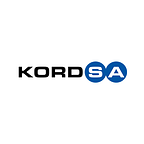Which Bee Stung Us?
From the Observation of Bees to its Application in Industry
The competition requires continuous improvements in cost and innovating solutions.
It was by analyzing the core of bees that mathematicians concluded that the shape of the hexagon enables the least material consumption for the best mechanical performance. Thus, combining a geometrical shape that entailed minimal consumption with a lightweight, mechanically efficient material, the sector was able to develop a solution that could bring inertia to such constructions.
Inventors have created multiple technologies that exploit this design, including aluminum foil, extruded plastic, and so on, but what interests us is the Honeycomb core made from aramid paper (Nomex® or Kevlar®) developed by DuPont and used in advanced composites. In addition to boasting an excellent mechanical performance and being light, this Honeycomb has outstanding fire-resistant properties, it is a non-electric conductor, and it absorbs acoustic waves. By thus, it is found everywhere in airplanes, whether in the wings, the engine nacelles, the freight compartments, the cabin interior, the galleys or the lavatories. The specific product used is either the core machine at the right geometry, or the sandwich panel made of Honeycomb and pre-impregnated skins.
Click to see a related article by Fatih Oz, PhD from the 10th issue of The Reinforcer magazine.
How is the Market for the Aramid Honeycomb Core?
In 2018, the global market for the product Aramid Honeycomb core for use in aerospace and defense was $770Mio, with a CAGR of 2.5% over 10 years (1). The product is also used in other fields, such as marine, wind, etc., but in smaller proportions. Aircraft manufacturers Airbus and Boeing together account for about 80% of the commercial aircraft sector’s consumption, with the remainder mainly dominated by Embraer and Gulfstream (1).
The major core suppliers are Hexcel (USA), Euro-Composites (LU), Gill Corporation (USA) and Plascore (USA). They all produce in both the mainland USA and Europe.
To enter this market, it normally takes considerably time. It can take several years for organizations to complete the required certification steps and to acquire qualifications for its methods and products.
This is an investment. In order to maintain long-term relationships, producers also need to be located close to their customers, so as to be reactive and to keep transport costs low. 95% of the volume of Honeycomb core is made up of air. The competition requires continuous improvements in cost and innovating solutions.
In 2018, the Honeycomb market in China was worth $136Mio (1). However, local production is struggling to grow, and only the products of the company ACC are being considered by local aircraft manufacturer Avic. To benefit from know-how, in 2014 the Chinese company Comac acquired the Austrian FACC. To date, the Chinese market has been dominated by well-established global material and parts subcontractors who create JVs locally.
Large-scale introduction of the Aramid Honeycomb was for the Boeing 747, as early as 1969. This material is an old product which remains irreplaceable for the time being. Hexcel broke new ground by introducing acoustic membranes under the name “Acousti Cap”; Euro Composite has grown in the value chain, offering machined parts and sandwich panels, as well as manufacturing fully-finished segments such as galleys.
The New Player: Advanced Honeycomb Technologies
Kordsa’s affiliate, Advanced Honeycomb Technologies, possesses an important asset that can be the key to impressive growth. The formulated phenolic resin is aqueous, reinforcing health, safety and having environmental minimum impact. The risk of fire and explosion during the curing cycle of the water-based resin is significantly lower than for those resins formulated with flammable solvents. It reduces exposure of volatile organic compounds (VOC’s) in the workplace, which is a clear health priority. Within the same approach, our array of sandwich panels proposes low FST/OSU-HR Epoxy Prepreg from Kordsa’s affiliate, Axiom Materials range, to replace the standard phenolic prepreg.
Major Aircraft makers and Tier 1 suppliers recognize our ability to develop quickly and efficiently with the help of our CTCE R&D teams, laboratories and development facilities. Our agility is our strength. We are fast, and our requirements with respect to Minimum Order Quantities (MOQ) are very acceptable. We are investing in the certifications and qualifications required by our customers in Europe, and we will probably be boosted by the fact that we will be producing close to them in Europe.
The challenge is exciting and in the hands of the Reinforcers.
(1) Source Counterpoint
Written by Denis Granger,
Head of Sales, Europe — Kordsa
